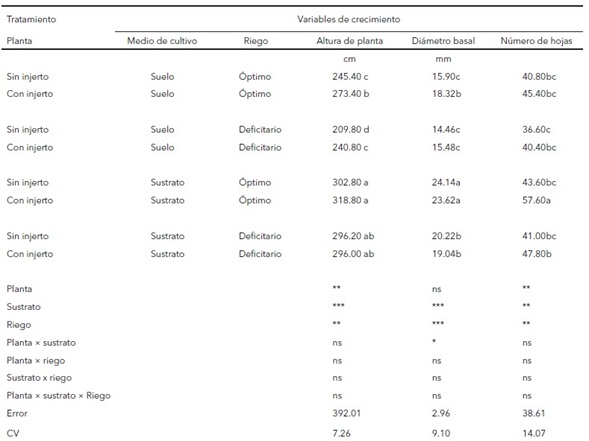Hydric Stress in the Production of Graf ted Cucumbers Grown on Soil and Substrate
DOI:
https://doi.org/10.28940/terra.v42i.1784Keywords:
biomass, cucumis sativus, irrigation deficitAbstract
The cucumber crop is af fected by the volume of water supplied, which can decrease the architecture of the plant as well as the yield. Graf ting can increase horticultural production due to its root vigor and explorative capacity. Therefore, a low-tech greenhouse experiment was set up at the facilities of the Universidad Autónoma Agraria Antonio Narro. In the spring-summer period, under a completely randomized design with a 2 x 2 x 2 factorial arrangement, obtaining eight treatments. The objective was to evaluate the ef fect of anchorage point (soil and substrate), graf ting (with and without graf ting) and irrigation volume (100% and 75%). Crop growth variables (plant height, basal diameter, number of leaves), yield variables (polar and equatorial diameter, number of fruits and yield), stomatal conductance and crop biomass were analyzed. The results showed an increase of 22.9 % in growth and 56 % biomass variables with the graf t grown on substrate, allowing plant energy savings and a tendency to be more ef ficient in water use. This indicates that graf ting is a beneficial tool for improving yields, as well as being an environmentally friendly technology.
Downloads
Publication Facts
Reviewer profiles N/A
Author statements
- Academic society
- Terra Latinoamericana
- Publisher
- Mexican Society of Soil Science, C.A.

















